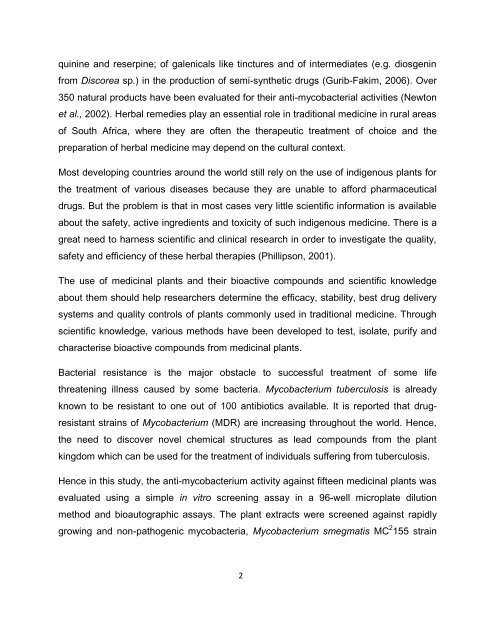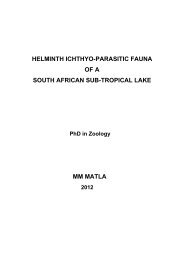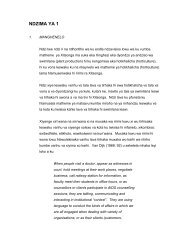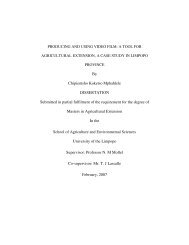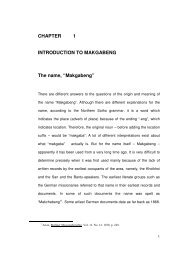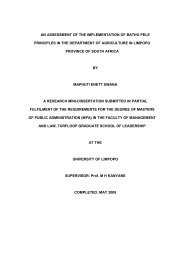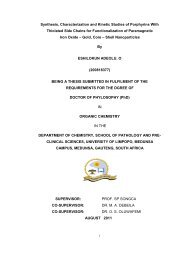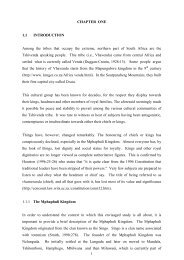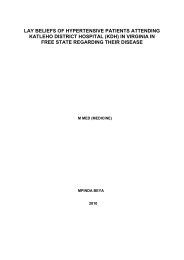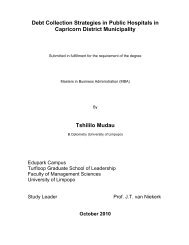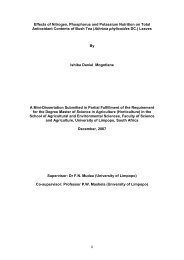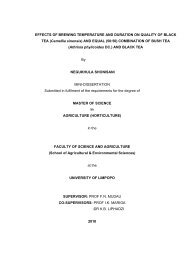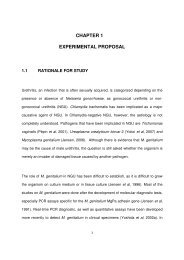Mmushi T MSc (Microbiology).pdf
Mmushi T MSc (Microbiology).pdf
Mmushi T MSc (Microbiology).pdf
You also want an ePaper? Increase the reach of your titles
YUMPU automatically turns print PDFs into web optimized ePapers that Google loves.
quinine and reserpine; of galenicals like tinctures and of intermediates (e.g. diosgenin<br />
from Discorea sp.) in the production of semi-synthetic drugs (Gurib-Fakim, 2006). Over<br />
350 natural products have been evaluated for their anti-mycobacterial activities (Newton<br />
et al., 2002). Herbal remedies play an essential role in traditional medicine in rural areas<br />
of South Africa, where they are often the therapeutic treatment of choice and the<br />
preparation of herbal medicine may depend on the cultural context.<br />
Most developing countries around the world still rely on the use of indigenous plants for<br />
the treatment of various diseases because they are unable to afford pharmaceutical<br />
drugs. But the problem is that in most cases very little scientific information is available<br />
about the safety, active ingredients and toxicity of such indigenous medicine. There is a<br />
great need to harness scientific and clinical research in order to investigate the quality,<br />
safety and efficiency of these herbal therapies (Phillipson, 2001).<br />
The use of medicinal plants and their bioactive compounds and scientific knowledge<br />
about them should help researchers determine the efficacy, stability, best drug delivery<br />
systems and quality controls of plants commonly used in traditional medicine. Through<br />
scientific knowledge, various methods have been developed to test, isolate, purify and<br />
characterise bioactive compounds from medicinal plants.<br />
Bacterial resistance is the major obstacle to successful treatment of some life<br />
threatening illness caused by some bacteria. Mycobacterium tuberculosis is already<br />
known to be resistant to one out of 100 antibiotics available. It is reported that drugresistant<br />
strains of Mycobacterium (MDR) are increasing throughout the world. Hence,<br />
the need to discover novel chemical structures as lead compounds from the plant<br />
kingdom which can be used for the treatment of individuals suffering from tuberculosis.<br />
Hence in this study, the anti-mycobacterium activity against fifteen medicinal plants was<br />
evaluated using a simple in vitro screening assay in a 96-well microplate dilution<br />
method and bioautographic assays. The plant extracts were screened against rapidly<br />
growing and non-pathogenic mycobacteria, Mycobacterium smegmatis MC 2 155 strain<br />
2


